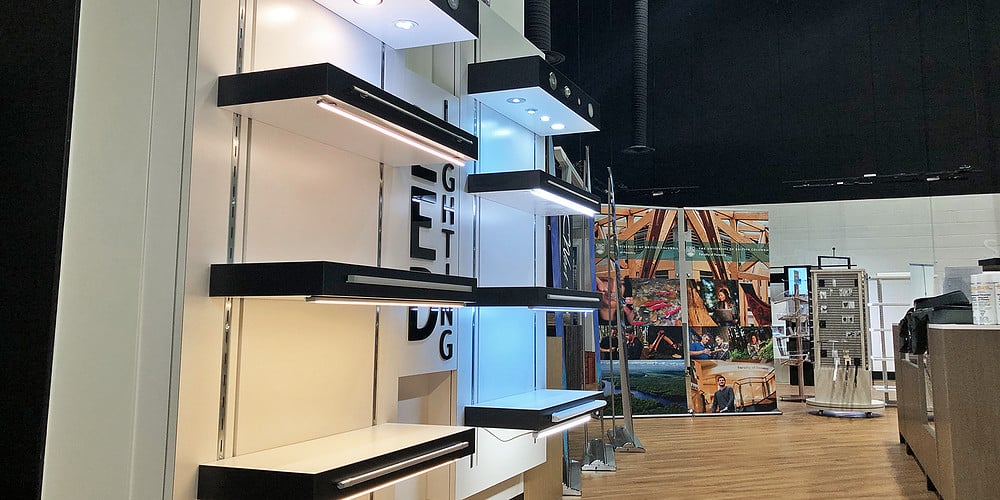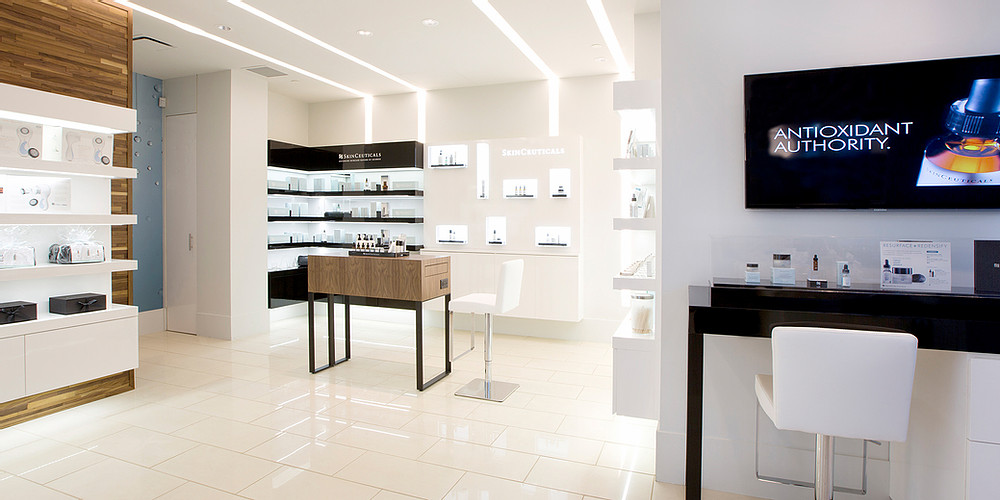Many studies have been done showing the importance of retail lighting and its effects on sales.
One study's methodology was to select two separate mall locations and illuminate the storefront end caps. Video cameras were in each store that continuously monitored shoppers for two days. On one day, the end cap was illuminated in-store one and not illuminated in-store two, on day two this was turned around. During the 2 days, period over 13,500 mall visitors was observed. The results were significant, during the time the end caps were illuminated GNC sold more than twice as many products than without the new lighting. It also showed that 25 percent of the passing public that did not enter the store were observed to be glancing at the displays as compared to 12 percent with the lights off. Gains were also noticed with browsing duration, product handling, and POP eye contact. So the classical marketing argument that “light pulls people” needs careful attention. There are no patent recipes for fixture lighting design as it is all about lighting according to the needs and space of a retail location.
The two main types of lighting currently being used in retail fixtures are fluorescent and LED.
Each of these lighting products has their place and offer different advantages and challenges. Fluorescent lighting has been around for a long time and is easy to source, they come in many sizes, color renditions, and types, pricing for fluorescent lighting is also usually the least expensive option at startup. Fluorescents also have some disadvantages from LED technology, they require maintenance and changing of the bulbs which can lead to the bulb colors being different from each other over time, they produce heat, especially in closed spaces which can damage the product or prematurely age the fixtures they are installed into. Fluorescents also have a larger output of UV light which can also lead to product damage over time. The light fixtures themselves are also larger and don’t always fit, hide or mount well inside many retail displays.
With the advent of LED lighting, many new options are available that weren’t in the past and which solve many of the problems of fluorescent lighting.
LED lighting is virtually maintenance-free which saves the time of changing bulbs but also ensures the bulb colors will stay consistent. They produce no heat on the front side and produce very little UV light. The biggest advantage of LEDs is the energy efficiency and ease of use. LED systems use low voltage DC power, they can be installed without the need of an electrician or inspection permits and use significantly less power all of which over time works to pay off the extra cost of the product at startup. It is also important to note that all LED manufacturers are not the same and therefore it is necessary to choose a brand that is reputable. These top brands will ensure very important factors are being considered when being made such as proper heat management of the diodes and batch management to ensure all the diodes are the same color from lamp to lamp.

Important factors need to be considered like the color temperature and brightness.
Once you have chosen to illuminate your fixture and have decided on the type of lighting, the other important factors need to be considered like the color temperature and brightness. Lighting color is categorized into 3 basic groups, Warm White (3000K-4000K) which produces a brownish tone, Neutral White (4000K-5000K) which produces the true white tone, Cool White (5000K-6000K) which produces a blueish tone. Each of these groups can be divided into smaller more specific color groups. Choosing which color to go with can depend on different factors, like the type and color of the product you are displaying or it can be used in contrast as a way-finding tool or to bring special attention to a sale item, but also less tangible things like the mood it creates. Studies have shown that things like glare and sparkle contribute to more liveliness and less detachment whereas too much brightness can create tension, remove the sense of intimacy and add detachment or using the correct contrast can even work to reduce tension.
As you may have discovered there are many things to be considered when choosing to illuminate your fixtures. But one thing is for sure, lighting can have dramatic effects on your retail operations from branding to sales. Each shop has its own character and style and the customer should be able to freely shop in a relaxed atmosphere whether looking at products for sale or seeking advice, attractive displays should put the customer in the mood to buy and lighting can do this.



